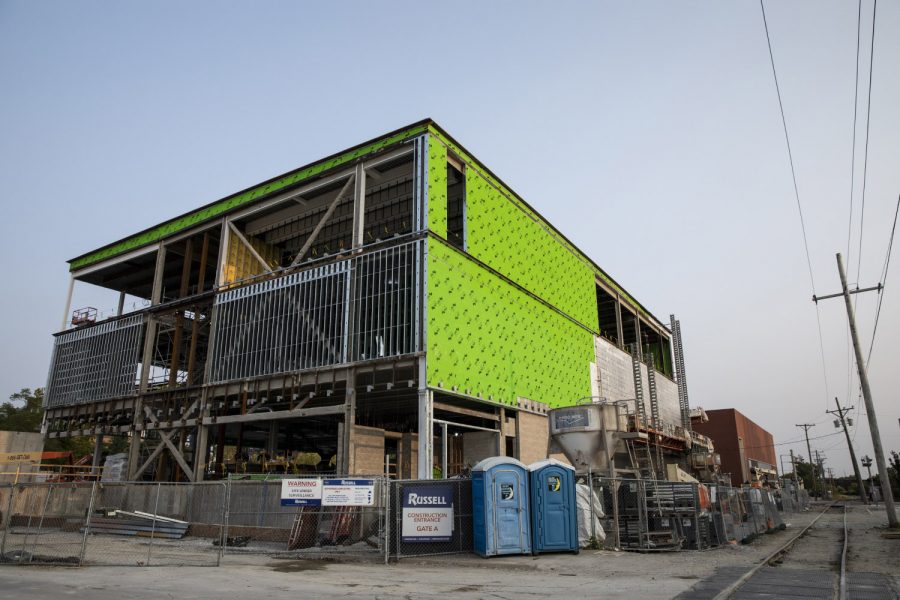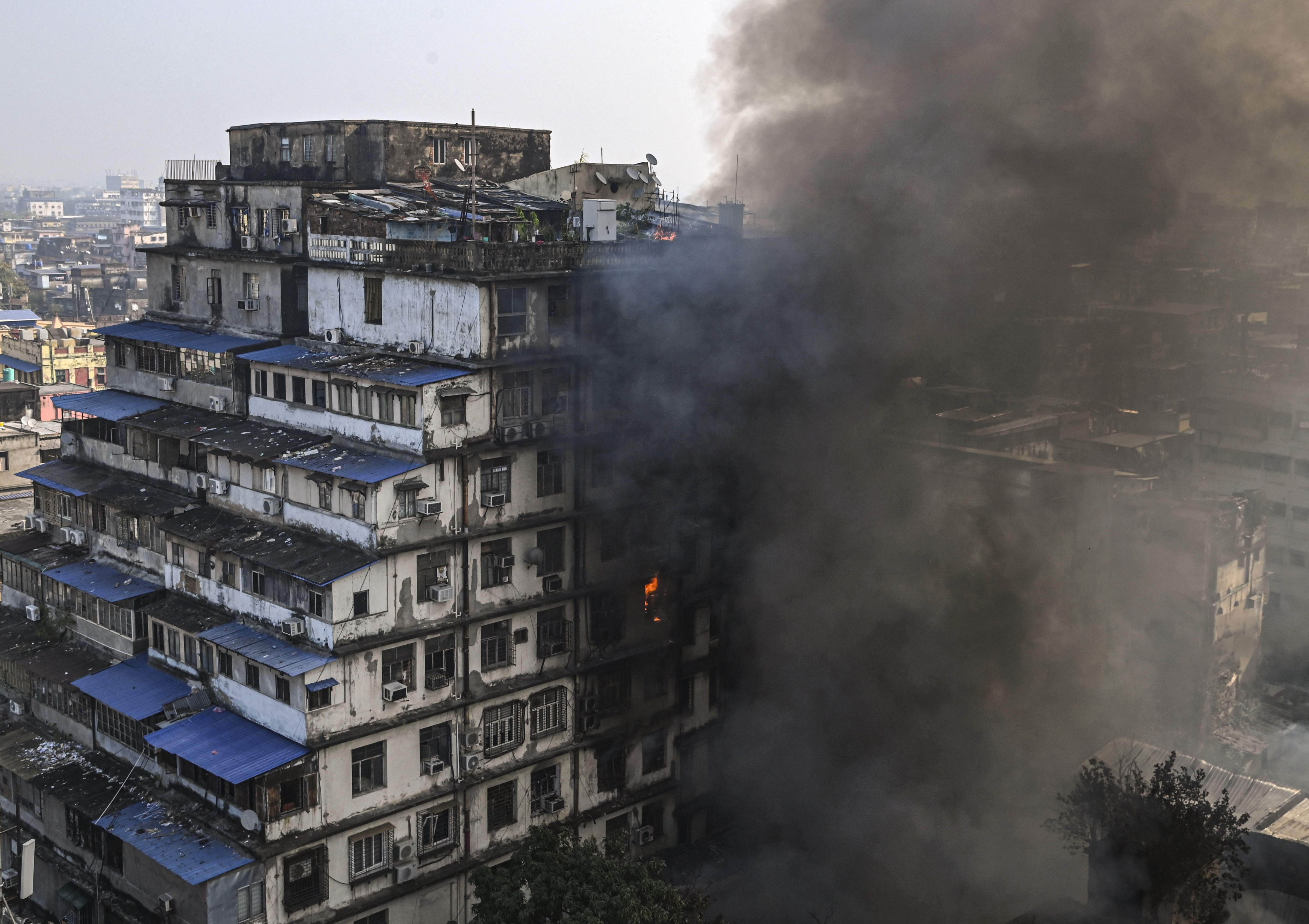Iowa air quality hits unhealthy level | The Hawk Eye – Burlington, Iowa – Daily Gate City

Air Quality Advisory Report: Iowa and its Alignment with Sustainable Development Goals
Executive Summary
An air quality advisory has been issued for the state of Iowa due to significant smoke from Canadian wildfires. This event has resulted in exceedances of the National Ambient Air Quality Standards (NAAQS) for fine particulate matter, posing public health risks and highlighting challenges related to several United Nations Sustainable Development Goals (SDGs), particularly SDG 3 (Good Health and Well-being), SDG 11 (Sustainable Cities and Communities), and SDG 13 (Climate Action).
Analysis of Air Quality Exceedance
The current atmospheric conditions over Iowa are characterized by a convergence of smoke originating from wildfires in Northwestern Canada. This has led to a significant increase in airborne pollutants.
- Pollutant of Concern: Fine Particulate Matter (PM2.5). Wildfire smoke also contains gases that can act as ozone precursors.
- Affected Area: The advisory covers most of the state of Iowa.
- Anticipated Duration: Elevated pollution levels are expected to persist for several days until a significant weather system disperses the smoke plume.
- Regulatory Threshold: The NAAQS for fine particulate matter is 35 micrograms per cubic meter (µg/m³) averaged over a 24-hour period. Current levels are expected to exceed this standard.
Implications for SDG 3: Good Health and Well-being
This air quality event directly impacts public health, a core component of SDG 3, which aims to ensure healthy lives and promote well-being for all at all ages. The elevated levels of fine particulate matter pose a direct threat to human respiratory and cardiovascular systems.
- Health Advisory Level: An exceedance of the 35 µg/m³ standard is classified as “unhealthy for sensitive groups.”
- Vulnerable Populations: Specific groups are at higher risk, including:
- Individuals with pre-existing heart or lung disease
- Older adults
- Children and teenagers
- Outdoor workers
- General Population Impact: Air quality is projected to reach levels considered “unhealthy,” at which point all individuals, including healthy adults, are advised to limit prolonged outdoor exertion to mitigate adverse health effects. This directly contravenes SDG Target 3.9, which seeks to substantially reduce the number of deaths and illnesses from air pollution.
Relevance to SDG 11 and SDG 13
The incident underscores the interconnectedness of environmental health, urban sustainability, and climate change, reflecting key targets within SDG 11 and SDG 13.
- SDG 11: Sustainable Cities and Communities: The goal to make cities and human settlements inclusive, safe, resilient, and sustainable (Target 11.6) is challenged by poor air quality. Such events degrade the urban environment, reduce the safety of public spaces, and impact the overall quality of life for residents.
- SDG 13: Climate Action: The increasing frequency and intensity of wildfires are widely linked to climate change. This event serves as a tangible example of the transboundary impacts of climate-related disasters, emphasizing the urgent need for global cooperation on climate action to mitigate such occurrences.
Public Health Recommendations and Resources
In alignment with the precautionary principles of public health and safety central to the SDGs, the following guidance and resources have been provided to the public.
- Limit Outdoor Activities: The primary recommendation is to reduce time spent outdoors, especially avoiding prolonged or strenuous exertion.
- Stay Informed: Monitor real-time air quality conditions to make informed decisions about daily activities.
Official Information Sources:
- Real-time Air Quality Data: Available on the Environmental Protection Agency’s (EPA) AirNow website at airnow.gov.
- Smoke Plume Visualization: A map tracking the smoke’s trajectory is available at fire.airnow.gov.
- Health and Activity Guidelines: Detailed precautions are published by the EPA at www.airnow.gov/publications/activity-guides-publications/.
1. Which SDGs are addressed or connected to the issues highlighted in the article?
-
SDG 3: Good Health and Well-being
- The article directly connects to this goal by discussing the health impacts of poor air quality. It states that the smoke can lead to “unhealthy” air quality levels and specifically identifies “groups sensitive to particulate matter,” including “people with heart or lung disease, older adults, children and teenagers, and outdoor workers.” This highlights the goal’s aim to ensure healthy lives and promote well-being for all at all ages.
-
SDG 11: Sustainable Cities and Communities
- The article’s focus is on the air quality within a specific urban area, Des Moines, Iowa. The issue of smoke from wildfires causing “exceedances of the National Ambient Air Quality Standards (NAAQS)” in a city directly relates to making cities and human settlements inclusive, safe, resilient, and sustainable. The problem described is a clear example of an adverse environmental impact on a city.
-
SDG 13: Climate Action
- Although not explicitly mentioned, the root cause of the air pollution is “smoke from wildfires in Northwestern Canada.” Large-scale wildfires are increasingly recognized as a climate-related natural hazard, often exacerbated by climate change. The article discusses a direct consequence of this hazard, connecting it to the need to take urgent action to combat climate change and its impacts.
2. What specific targets under those SDGs can be identified based on the article’s content?
-
Target 3.9: By 2030, substantially reduce the number of deaths and illnesses from hazardous chemicals and air, water and soil pollution and contamination.
- The article’s entire premise is based on the health risk posed by air pollution from fine particulates. It warns that levels are “unhealthy for sensitive groups” and will likely reach levels considered “unhealthy” for “even healthy adults.” This directly aligns with the target of reducing illnesses caused by air pollution.
-
Target 11.6: By 2030, reduce the adverse per capita environmental impact of cities, including by paying special attention to air quality and municipal and other waste management.
- The article is a case study of this target in action. It reports on the adverse environmental impact (poor air quality) on the city of Des Moines and references the “National Ambient Air Quality Standards (NAAQS),” which are a mechanism for paying special attention to and managing air quality in cities and other areas.
-
Target 13.1: Strengthen resilience and adaptive capacity to climate-related hazards and natural disasters in all countries.
- The event described—transboundary smoke from massive wildfires impacting a distant state—is a climate-related hazard. The issuance of an air quality alert and the provision of information through platforms like AirNow.gov are measures that strengthen the community’s resilience and adaptive capacity by informing citizens of the hazard and advising them on protective actions, such as “limiting outdoor activities.”
3. Are there any indicators mentioned or implied in the article that can be used to measure progress towards the identified targets?
-
Indicator for Target 11.6 (Indicator 11.6.2: Annual mean levels of fine particulate matter (e.g. PM2.5 and PM10) in cities)
- The article explicitly mentions the measurement of “fine particulate matter” and provides a specific quantitative standard: “The national standard for fine particulate matter is 35 micrograms per cubic meter (µg/m3) averaged over a 24-hour period.” This is a direct reference to the type of data used for this indicator. The monitoring of these levels, as reported in the article, is how progress is measured.
-
Indicator for Target 3.9 (Indicator 3.9.1: Mortality rate attributed to household and ambient air pollution)
- While the article does not provide mortality statistics, it directly implies the measurement of health impacts. By identifying “unhealthy” levels and warning “people with heart or lung disease,” it refers to the very health conditions that contribute to the mortality and morbidity rates measured by this indicator. The concern over these health impacts is the basis for the air quality alert.
-
Indicator for Target 13.1 (Indicator 13.1.3: Proportion of local governments that adopt and implement local disaster risk reduction strategies)
- The article implies this indicator through its description of the response to the hazard. The issuance of a public warning about air quality, the reference to national standards (NAAQS), and the direction of the public to EPA resources like “airnow.gov” are all components of an implemented disaster risk reduction strategy at the local and national levels. The article itself is a product of this implemented strategy.
4. Create a table with three columns titled ‘SDGs, Targets and Indicators” to present the findings from analyzing the article. In this table, list the Sustainable Development Goals (SDGs), their corresponding targets, and the specific indicators identified in the article.
| SDGs | Targets | Indicators |
|---|---|---|
| SDG 3: Good Health and Well-being | Target 3.9: Substantially reduce the number of deaths and illnesses from hazardous chemicals and air, water and soil pollution and contamination. | Implied Indicator (related to 3.9.1): The article implies the measurement of health impacts by identifying “unhealthy” air quality levels and risks for sensitive groups with “heart or lung disease.” |
| SDG 11: Sustainable Cities and Communities | Target 11.6: Reduce the adverse per capita environmental impact of cities, including by paying special attention to air quality. | Indicator 11.6.2: The article explicitly mentions the measurement of “fine particulate matter” and the standard of “35 micrograms per cubic meter (µg/m3),” which is the core of this indicator. |
| SDG 13: Climate Action | Target 13.1: Strengthen resilience and adaptive capacity to climate-related hazards and natural disasters. | Implied Indicator (related to 13.1.3): The issuance of an air quality alert and guidance to the public (via AirNow.gov) demonstrates the implementation of a disaster risk reduction strategy in response to a climate-related hazard. |
Source: mississippivalleypublishing.com

What is Your Reaction?
 Like
0
Like
0
 Dislike
0
Dislike
0
 Love
0
Love
0
 Funny
0
Funny
0
 Angry
0
Angry
0
 Sad
0
Sad
0
 Wow
0
Wow
0














































































